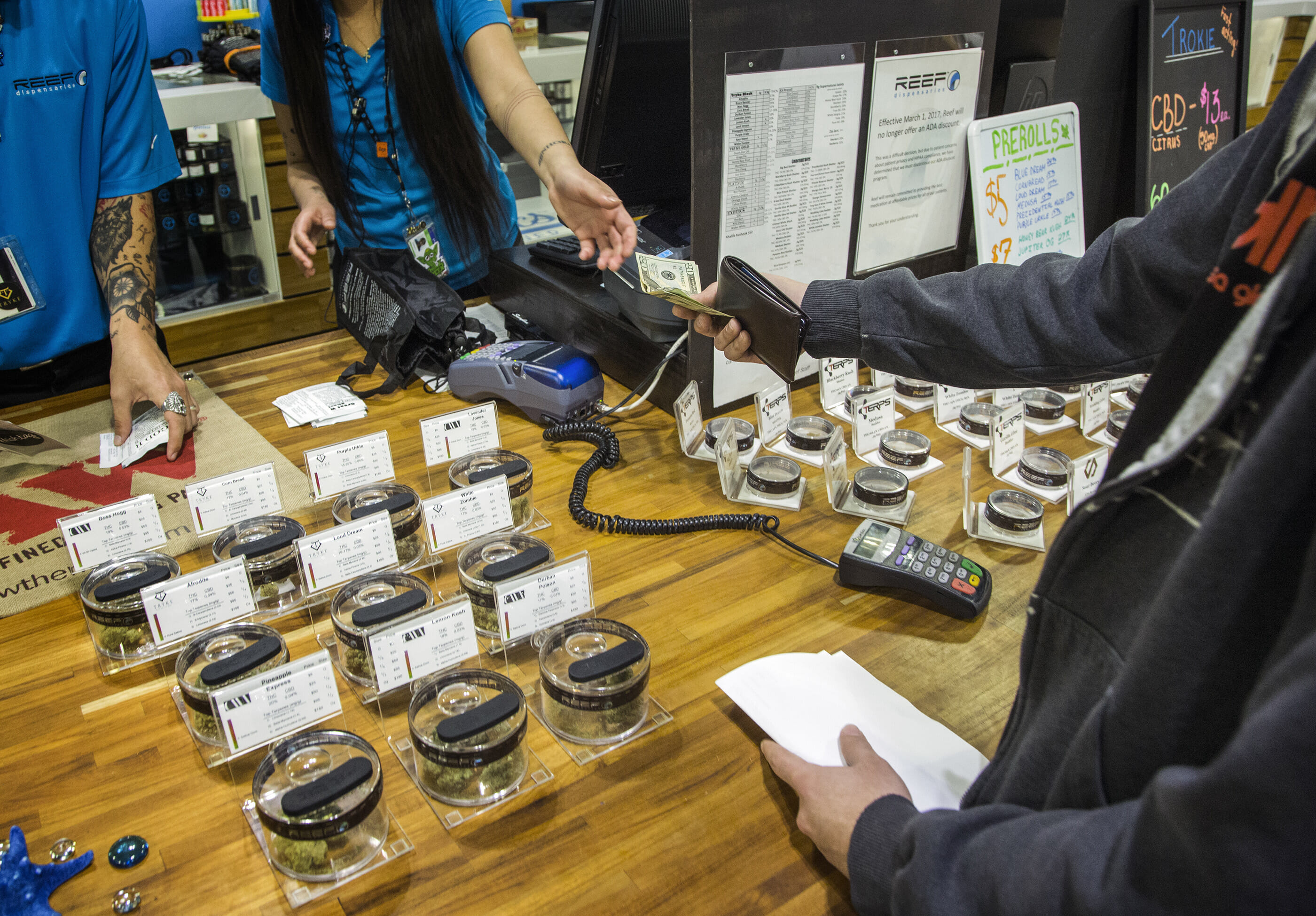Why Segerblom’s marijuana proclamation is out of bounds

By Michael Raponi
“I really believe that Nevada can be the marijuana capital of the world,” said Nevada’s godfather of pot, state Sen. Tick Segerblom, D-Las Vegas. “And this will be one more thing in our toolbox.”
-- Las Vegas Review-Journal, September 11, 2017, in response to the Legislative Counsel Bureau’s opinion that state law does not prohibit local governments from permitting for marijuana consumption in businesses.
But not just yet, senator. Please.
Why not yet? Because this is still an experiment with many unknowns. Yes, even given the latest from Colorado and Washington with nearly four years experience in retail sales.
What isn’t an unknown, especially for states new to recreational use, is the need to establish reliable baseline data, known as the first data to be compared to future data. Reliable data should drive public policy, removing all guesswork from those decisions that could have long-term effects on public health and safety. Virtually all state implementation plans, including Nevada’s own playbook, The Regulation and Taxation of Marijuana Act Final Report, call for this type of data collection. No state wants to build this particular plane while flying at 30,000 feet. It’s about putting first things first.
One case in point is the cautionary statements in the Report of the Special Senate Committee on Marijuana for the Commonwealth of Massachusetts (March 2016), where recreational use was approved by voters in November 2016, the same time use was approved in Nevada. The report states “Furthermore, Massachusetts currently lacks the necessary baseline data on marijuana public health, public safety, and economic and fiscal impacts, as well as the ability to track and monitor trends over time. This issue has been particularly problematic for Colorado and Washington in formulating sound marijuana policy.”
This report, published before the ballot measure was voted on, was not biased for or against legalization. It fully recognized existing use rates amongst its populace but clearly professed the need for a thoughtful, careful approach to implementing policy and, most importantly, the need to draw on lessons learned in other states, particularly Colorado and Washington.
With the legalization of medical and recreational use of marijuana in Nevada, certain things are becoming abundantly clear. With strong, initial demand, there is no question of popularity and industry potential. Sales reports in states where use is legal has demonstrated the industry is an economic juggernaut; job creation is already proven. And with Nevada’s monthly sales meeting estimates, tax revenue is there too, and should more than cover the projected income in the state budget.
What isn’t clear yet is just how fast rapid expansion of accessibility should take place. Language in Question 2 appeared to exclude public use. However, depending on the recent decision by the Legislative Counsel Bureau and the refusal to opine on the issue by the attorney general’s office, venues for public consumption may or may not be in Nevada’s immediate future.
Regardless of that outcome, and before espousing rapid expansion to exceptional levels, the following issues represent a sampling of the state-level research needed to ensure sound, coherent policies are implemented based on proven data: usage rates of minors; arrest rates of minors (especially blacks and Hispanics); traffic deaths related to driving under the influence; hospitalization and emergency room visit rates; and effects on existing black markets. There are others.
One may assume information from other states that have been-there-done-that, like Colorado for example, is readily available. Unfortunately, it is difficult to get to the cold, hard facts. Has youth use increased or not? Are there more driving accidents linked to intoxicating levels of THC and resulting in fatalities or not? Have black markets disappeared or do they persist? These are pressing issues, but finding clear answers depends on what you read and what you hear.
The report, “Lessons Learned After 4 Years of Marijuana Legalization in Washington and Colorado,” published by the anti-legalization organization Smart Approaches to Marijuana (SAM), cites troubling data in the aftermath of legalization. In 2013-14, according to the report, Colorado ranked first in youth use relative to the national average by a significant margin, where 12.5 percent of 12-17-year-olds used marijuana compared to 7.2 percent nationally (and 8 percent in Nevada). The report also claims legalization has resulted in limited to no impact on black markets, increased hospitalization and emergency room visits, negative effects on employment and communities of color, and increased driving arrests and fatalities.
Breaking this down further, the SAM report based its driving statistics on information provided by the Rocky Mountain High Intensity Drug Trafficking Area (RMHIDTA), which reported the percentage of traffic fatalities where operators tested positive for marijuana increased from 16.5 percent to 21 percent over the four-year period following legalization. However, the RMHIDTA reporting methods, like the SAM reporting, have come under criticism for focusing too much on the negative consequences of legalization. Regardless, the volley about this issue continued as the Denver Post recently published a series of news articles that link sharp increases in traffic fatalities to marijuana use. Validating there indeed may be a problem, the Colorado Department of Transportation is increasing the funding of its education efforts, according to the Post.
But some of these troubling numbers don’t size up to other data that show, for example, no substantial increase in youth usage since legalization, as determined by the Colorado Department of Public Health and Environment in its report Monitoring Health Concerns Related to Marijuana in Colorado: 2016.
All of this would not be such a big deal were it not for how some reports so blatantly contradict each other.
So, for the sake of argument, let’s focus on Colorado’s report which shows outcomes less-than-dire as previously thought. Although it is from this 300-plus page report that comes the good news regarding lower-than-anticipated youth use patterns, there is evidence of increases in marijuana-related emergency room visits and hospitalizations. And there are many references throughout the report attesting to the need for continued monitoring and additional research and evaluation in areas related to public health and safety. Again, this is after Colorado’s nearly four years of retail sales. Nevada is into this four months.
All of this points to one logical conclusion about the merits or pitfalls of rapid expansion: There is not one logical conclusion about the merits or pitfalls of rapid expansion.
Because the jury is still out on this by a long-shot, Nevada needs to proceed cautiously by providing its adult citizens reasonable opportunities for recreational use while expanding access under structures that are, in the words of Governor Sandoval, responsible, restricted, and respected. Nevada needs to determine its own baseline data and follow-up results upon which to make sound decisions. Following the advice of our own task force, the state needs to “… establish and fund a program of research to evaluate and assess the immediate and long-term impact of Ballot Question 2 on marijuana use and public health in Nevada.” The Clark County Commission is correct in pumping the brakes on this right now.
It certainly isn’t the right time for Nevada to trumpet its pioneer spirit by striving to become the “marijuana capital of the world.” For these and other legitimate concerns, Sen. Segerblom’s proclamation is at best wildly premature or at worst downright reckless.
Michael Raponi is a former director at the Nevada Department of Education with 33 years of experience in career and technical education and workforce development. He currently writes guest articles covering a variety of topics, and may be contacted by email at [email protected].
